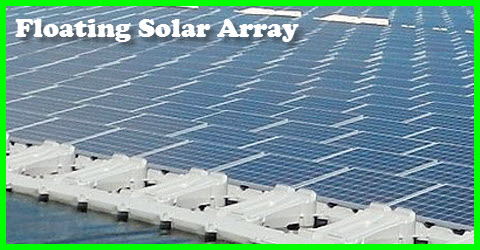This Recent Press Release Found On Solar Thermal Magazine
Large water reservoirs are ideal places for floating solar arrays. The reservoir provides a large chunk of real estate that the solar panel array requires. And the solar panels shade the water reducing the amount of evaporation from the water. It’s a win / win situation that’s been talked about for some time.
The location of this project is Yamakura Dam (Ichihara City, Chiba Prefecture, Japan). It is to produce 13.4 MW from 50,000 Kyocera modules.

Here’s the announcement.
“Kyocera Corporation and Century Tokyo Leasing Corporation announced this week that Kyocera TCL Solar LLC, a joint venture established by the two companies, will develop and operate a 13.4-megawatt (MW) floating solar power plant on the Yamakura Dam reservoir, managed by the Public Enterprises Agency of Chiba Prefecture in Japan for industrial water services.”
Aiming to reduce its burden on the environment, the Public Enterprises Agency of Chiba Prefecture had been publicly seeking companies to construct and operate a floating solar power plant at the Yamakura Dam. Kyocera TCL Solar was selected to undertake this project in part due to its experience and expertise in developing utility-scale solar power plants in Japan. The company aims to begin operations in March 2016 after negotiating with related parties including Tokyo Electric Power Company.
The project will be comprised of approximately 50,000 Kyocera modules installed over a water surface area of 180,000m2. The plant will generate an estimated 15,635 megawatt hours (MWh) per year — enough electricity to power approximately 4,700 typical households*2 — while offsetting about 7,800 tons*3 of CO2 emissions annually.
Get more details at the source document




Minwoo Kim
Apr 11. 2015
Floating Solar Power Systems are wonderful Ideas. But, it’s very important to maintain effectively same direction and position on the water for floating solar plants. Because directional change of solar panels reduces electricity production. So floating solar plants also need the directional control mooring systems for their parked positions. Azimuth and position change of floating solar plants caused by wind, waves and external forces. Restoring Force Strengthened Mooring System for floating solar plants has been created in South Korea. This Mooring System generates Restoring Force immediately when floating solar plants are being rotated or moved on the water. Recently, Restoring Force Strengthened Mooring Systems have been used in South Korea. You can see the Restoring Force Strengthened Mooring System in Ochang Dam, South Korea. I N I WORLD